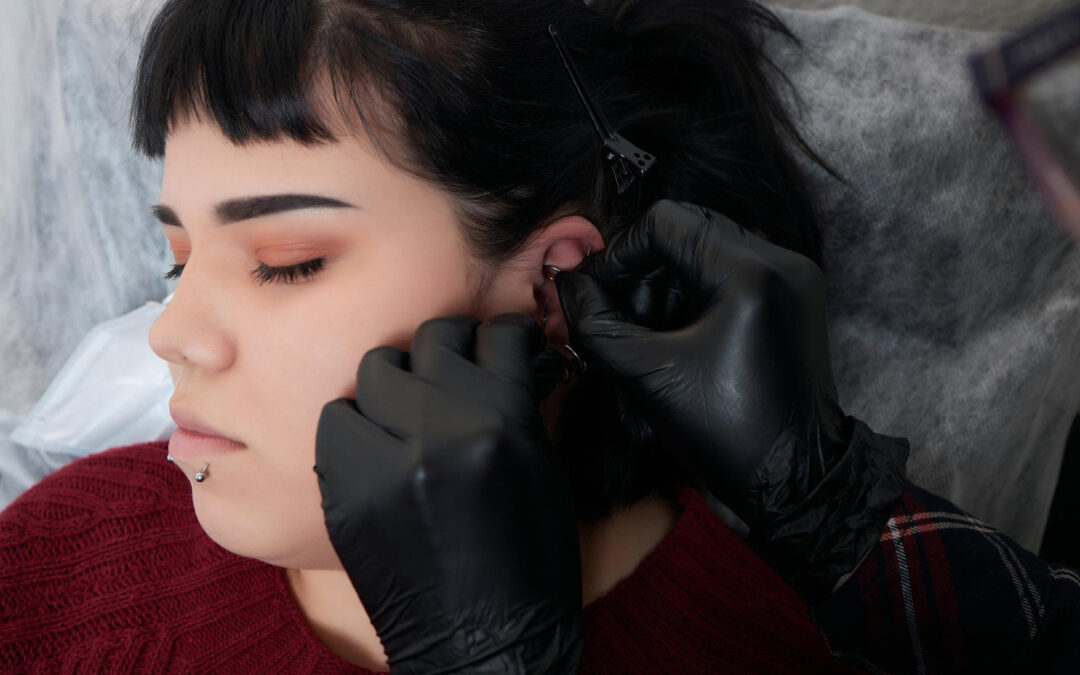Getting a piercing is an exciting way to express your personality and style. However, it’s important to care for your new piercing properly to avoid common issues like infections or prolonged healing times. Understanding what to do—and what not to do—can make all the difference in ensuring a smooth healing process. In this blog, we’ll explore common mistakes to avoid after getting a piercing, including tips on choosing the best season for your new adornment.
When’s the Right Season to Get a Piercing?
The season you choose for your piercing can impact the healing process. While piercings can be done year-round, certain times of the year are better suited for healing:
- Spring or Fall: These seasons are ideal because the weather is mild, reducing the chances of sweating, irritation, or exposure to extreme elements.
- Avoid Hot Summer Months: Summer activities like swimming can expose your piercing to bacteria from pools or oceans, increasing the risk of infection. Sweating can also irritate fresh piercings.
- Winter Cautions: While winter can work for some, wearing tight scarves or hats can irritate facial or ear piercings. Opt for loose, breathable clothing to prevent friction.
Choosing the right season for your piercing ensures a more comfortable and stress-free healing experience.
Mistake 1: Touching Your Piercing with Unclean Hands
One of the most frequent mistakes people make is touching their piercing without washing their hands first. Your hands carry bacteria, which can easily transfer to the piercing site and cause irritation or infection. Always wash your hands with antibacterial soap before cleaning or adjusting your jewelry.
Mistake 2: Ignoring the Aftercare Instructions
Piercing professionals provide specific aftercare guidelines for a reason. These instructions are designed to help your piercing heal quickly and safely. Ignoring advice, such as skipping cleanings or using unsuitable products, can lead to complications like swelling or infection. Stick to the recommended cleaning routine and avoid using alcohol or hydrogen peroxide, which can be too harsh on healing skin.
Mistake 3: Changing Jewelry Too Early
It can be tempting to swap out your initial jewelry for something more stylish. However, changing your jewelry too soon can disrupt the healing process and even cause damage. Most piercings take several weeks to a few months to heal completely. Consult your piercer before making any changes to ensure your piercing is ready.
Mistake 4: Over-Cleaning the Piercing
Cleaning your piercing is essential, but over-cleaning can do more harm than good. Excessive cleaning strips the natural oils your body produces to aid healing, potentially causing dryness and irritation. Stick to the cleaning schedule recommended by your piercer—usually twice a day—and use a saline solution or a piercing-friendly cleanser.
Mistake 5: Using Unsuitable Jewelry
Not all jewelry is created equal. Using low-quality metals like nickel can trigger allergic reactions or slow down healing. Always opt for high-quality materials such as surgical steel, titanium, or 14-karat gold. These materials are less likely to cause irritation and are safer for your skin.
Mistake 6: Sleeping on Your New Piercing
Sleeping on your piercing puts unnecessary pressure on the area, leading to discomfort and delayed healing. For piercings on your ears or face, use a travel pillow or try sleeping on your back to avoid direct contact.
Mistake 7: Exposing the Piercing to Unsanitary Environments
Fresh piercings are especially vulnerable to bacteria. Activities like swimming in public pools, using hot tubs, or taking long baths should be avoided during the healing process. If you must swim, consider using waterproof bandages to cover your piercing securely.
For more advice on maintaining clean and healthy piercings, check out this helpful guide on safe piercing care.
Mistake 8: Wearing Tight or Irritating Clothing
For body piercings, tight clothing can rub against the area and cause unnecessary irritation. Opt for loose, breathable fabrics that won’t get caught on your jewelry. This is especially important for navel and nipple piercings.
How to Promote Faster Healing
- Stay Hydrated and Eat Well
Proper nutrition helps your body heal faster. Drink plenty of water and include foods rich in vitamins like zinc and vitamin C. - Avoid Smoking or Alcohol
Both can slow the healing process and increase the risk of infection. If possible, minimize these habits while your piercing is healing. - Be Patient
Healing takes time. Depending on the location of your piercing, it can take anywhere from six weeks to a year to heal fully. Follow your aftercare routine diligently and avoid shortcuts.
Getting a piercing is an exciting journey, but avoiding common mistakes is essential for a smooth experience. Whether you’re planning to pierce in spring or fall for optimal healing or ensuring you follow proper aftercare steps, these tips will help you enjoy your new piercing with confidence. Ready to book your next piercing? Visit Aum Threading’s piercing services to schedule an appointment with our experienced professionals. Your journey to safe and stylish piercings starts with us!

